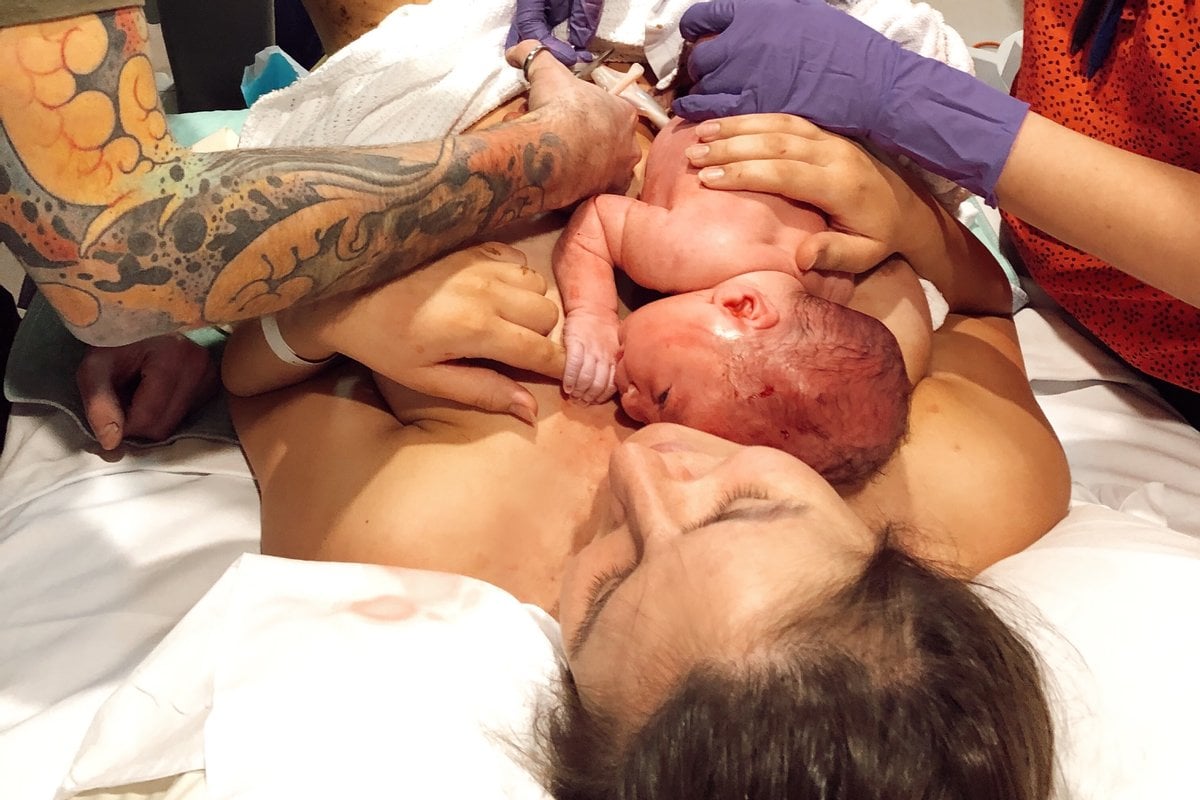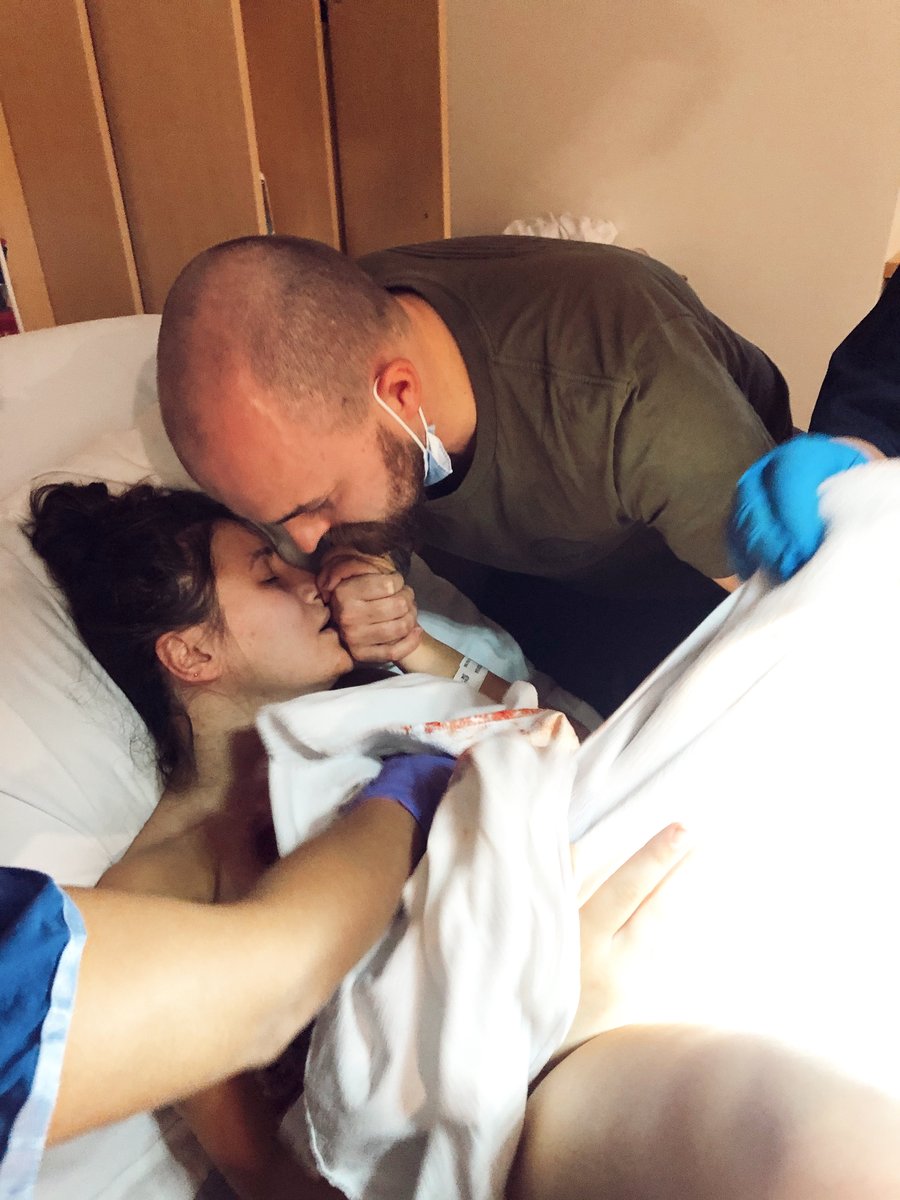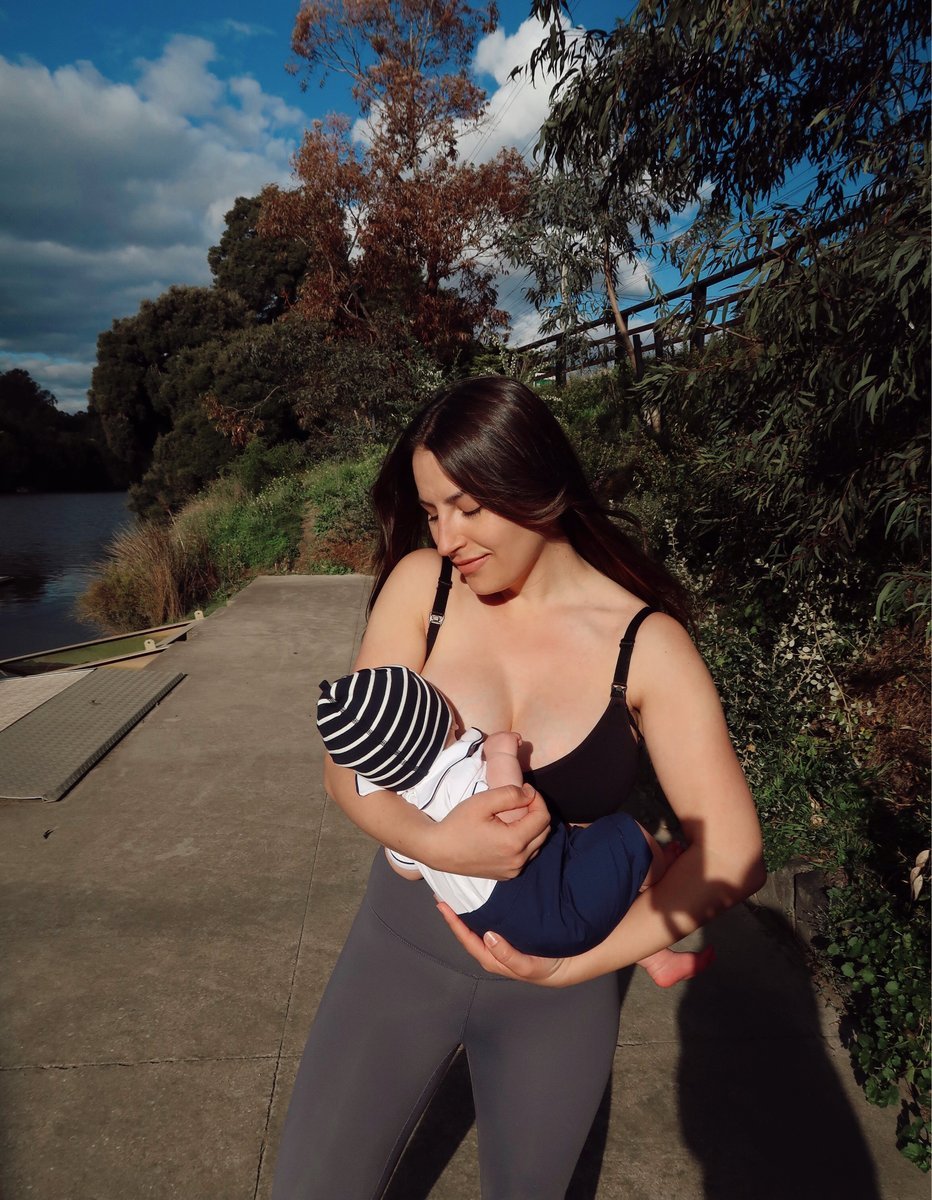
I gave birth to my first child, a gorgeous healthy boy, at the end of May.
Since then, I've reflected on some of the most surprising and enlightening lessons learned from childbirth and associated experiences one might encounter.
Hopefully, my sharing will shine a light on important things often brushed over or even shrouded in secrecy.
Watch the trailer for The Delivery Room, Mamamia's new podcast all about birth stories. Post continues below.
Here’s what I want you to know.
Going on your back is comfortable and relaxing.
This is not a good thing!
My birth plan involved being on all fours, sitting or standing to deliver, and avoiding a supine position. However, after coming out of the freezing birth suite bath and going on my back on the bed to be dried off and warm up, I ended up staying there.
I knew from my research that it’s not the best position to deliver, but was told that ‘sometimes it just works’.
In fact, it closes off the pelvis making things much harder. It’s kinda only good for medical people to have a good point of view and access to intervene. I was so comfortable, and I didn’t have the energy to argue. My partner knew my birth plan, but we just wanted our baby out safely, and well, you know, the midwives are the professionals… My mind wasn’t right.




